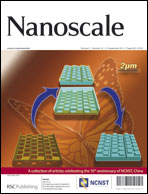Study of urological devices coated with fullerene-like nanoparticles
Abstract
Insertion of endoscopes and other medical devices into the human body are ubiquitous, especially among aged males. The applied force for the insertion/extraction of the device from the urethra must overcome endoscope-surface–human-tissue interactions. In daily practice a gel is applied on the endoscope surface, in order to facilitate its entry into the urethra, providing also for local anesthesia. In the present work, a new solid-state lubricant has been added to the gel, in order to reduce the metal–urethra interaction and alleviate the potential damage to the epithelial tissue. For that purpose, a urethra model was designed and fabricated, which allowed a quantitative assessment of the applied force for


 Please wait while we load your content...
Please wait while we load your content...